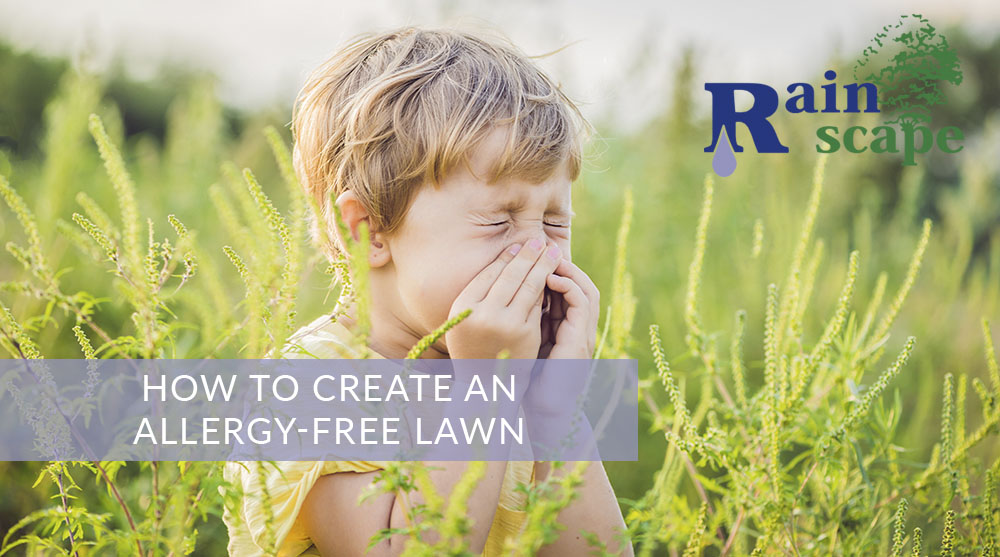More than 50 million Americans suffer from allergies, with tree, grass and weed pollen among the most common triggers according to the Asthma and Allergy Foundation of America (AAFA). Signs that you might be suffering from these types of allergies, often called “hay fever,” include itchy eyes, stuffy or runny nose, sneezing, itchy skin or rashes, watery eyes, or swelling.
Allergies like this don’t have to keep you indoors, though, and even if you have a grass lawn there are still things you can do to reduce or eliminate allergens for sneeze-free fun times outside. Here are a few easy ideas.
Trim grass regularly
Grass that is left to grow too long will mature to the flowering stage and release pollen. Regular trimming to keep grass around 2-3 inches tall will stop pollen production and cut back on allergy triggers.
Depending on the season and the type of grass you have, you might need to cut your grass anywhere from every few days to every few weeks. Monitor grass growth and set reminders on your calendar until it becomes routine. If you use a local lawn care maintenance service, be sure to discuss your requirements with them so they can set and keep a regular schedule as well.
When pollen production might be high, how and when you cut grass can also affect allergy triggers. Pollen production is highest during mid-morning as the sun peaks, so try to cut grass in the early morning or late afternoon to avoid stirring pollen up. You can also use a mower that bags cut grass and keep pollen from blowing around.
Control weeds to control allergy triggers
Some of the worst allergy triggers aren’t grass, but the weeds that invade and grow in your grass. Here in the agricultural-rich San Joaquin Valley, spring all the way through late fall can be high in pollen production, especially for weeds. Weekly surveying your lawn and the surround areas for signs of weed growth, followed by immediate treatment or removal of any weeds is another way to help keep allergy triggers at a low level.
Some of the most common weeds we see here in the Visalia area that aggravate allergies include:
- Ragweed
- Dandelion
- Nettle
- Bluegrass
- Sagebrush
- Pigweed
Install allergy-free artificial grass
According to the Centers for Disease Control, last year around 19.1 million adults had grass allergies, which is one of the many reasons so many people are installing artificial turf for their homes and businesses.
When a natural grass lawn is converted to artificial turf, pollen from grass is no longer an issue from your immediate area. Pollen from trees and other plants nearby can still be present, but irritant levels in your immediate vicinity will be massively reduced. Another benefit of synthetic grass is that there is no need to mow grass, which can kick up pollen or irritants into the air. Artificial turf also eliminates the need for chemical fertilizers or herbicides that can also trigger an allergy attack.
Quality synthetic lawn landscaping will provide you with much more than allergy-free living outdoors. Synthetic turf lawns are an investment that not only reduces water and maintenance costs, they enhance your lifestyle by providing a beautiful, allergy-free space for enjoying every part of your home.

